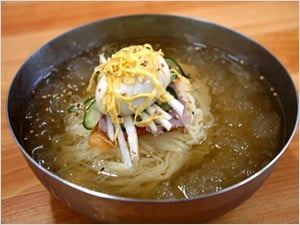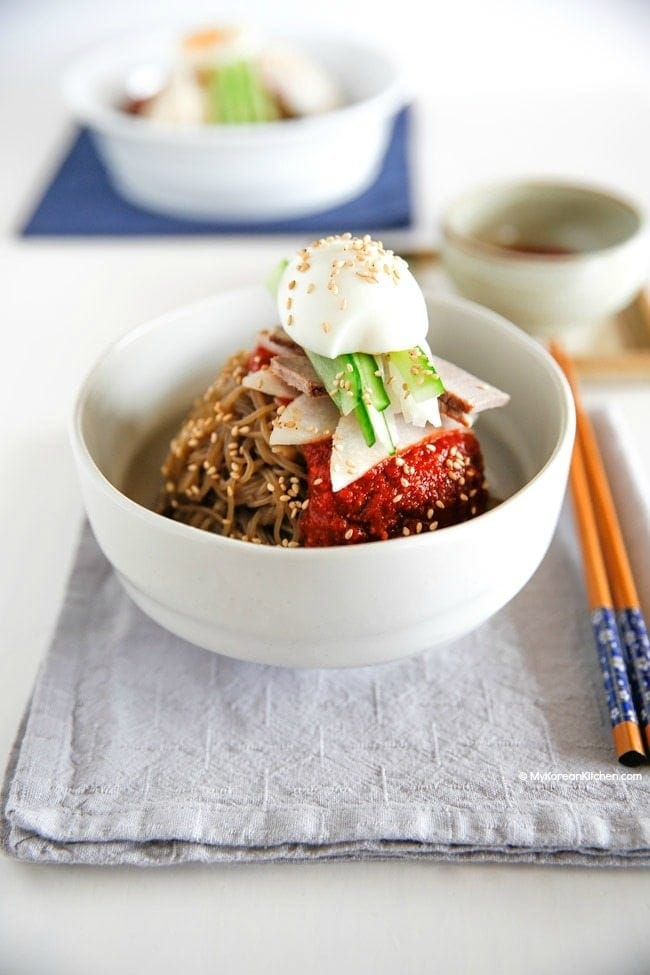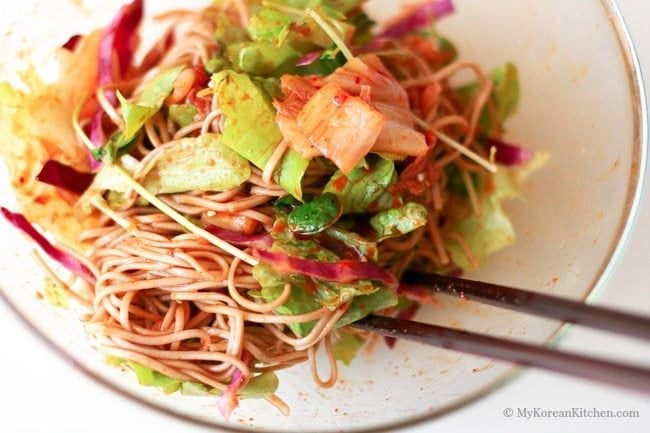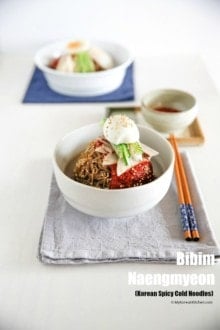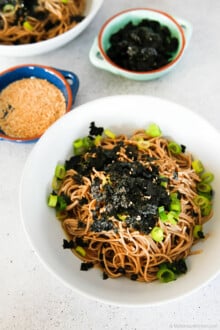If you started to wonder what is different between Bibim Naengmyeon (비빔냉면) and Bibim Guksu (비빔국수) when you read my bibim guksu post the other day, I wouldn’t be surprised. Because I wasn’t quite sure which one is more accurate as the title either.
Here is a beautiful picture of my bibim naengmyeon (top) and compare it with my bibim guksu picture below. Have a close look. Can you tell what the difference is? Not including the toppings?
As far as I know, the main difference is “the noodles”. Naengmyeon noodles are usually made of buckwheat flour, sweet potato starch or potato starch. They are very resilient and relatively harder to cut with your teeth.
On the other hand, Guksu noodles are usually made of wheat flour and sometimes something else is added like the soba noodles I used for my Bibim Guksu (The noodles had 69% wheat flour and 29% buckwheat flour).
I prefer Guksu noodles over naengmyeon noodles because they are easier to chew, therefore less messy to eat and feels easy on my stomach. What about you?
Here is some information on Naengmyeon if you are interested.
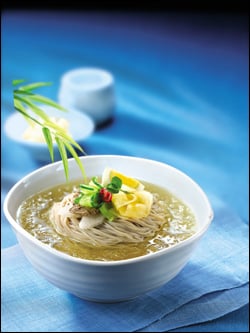
Types of Korean Naengmyeon (냉면)
- Pyongyang Naengmyeon (평양냉면) – Mul Naengmyeon (물냉면), served in cold watery radish kimchi broth, the noodles are usually 70% buckwheat flour and 30% starch powder
- Hamhung Naengmyeon (함흥냉면) – Bibim Naengmyeon (비빔냉면), served in spicy seasoning without the broth, the noodles are usually 100% potato starch
- Busan style Milmyun (부산밀면) – the noodles are usually 70% wheat flour and 30% starch powder
